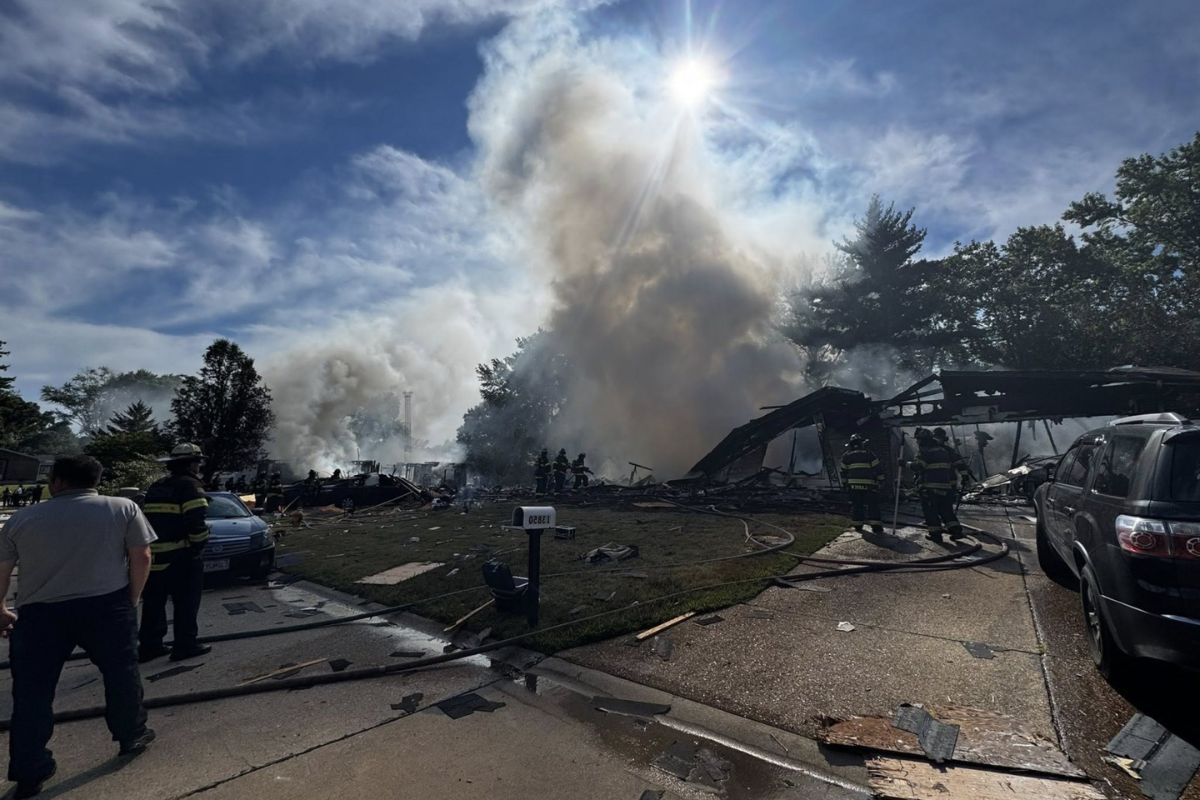
What caused the St. Louis Explosion? The St. Louis Explosion, a tragic event that shook the city, was caused by a gas leak. On April 15, 2023, a massive blast occurred in a residential area, leading to significant damage and loss. The explosion resulted from a ruptured gas line, which had gone unnoticed for days. This incident highlighted the importance of regular maintenance and monitoring of gas lines to prevent such disasters. Residents reported smelling gas days before the explosion, but the issue wasn't addressed in time. The aftermath saw emergency services working tirelessly to rescue trapped individuals and provide aid to those affected.
The St. Louis Explosion: A Historical Event
The St. Louis Explosion, also known as the East St. Louis Explosion, was a catastrophic event that left a significant mark on the city's history. This tragic incident occurred in 1976 and had far-reaching consequences. Here are some fascinating facts about this historical event.
-
The explosion happened on July 17, 1976, in East St. Louis, Illinois, a city just across the Mississippi River from St. Louis, Missouri.
-
A railcar carrying 25,000 gallons of propane gas derailed and caught fire, leading to the explosion.
-
The explosion was so powerful that it could be felt up to 50 miles away.
-
The blast created a fireball that rose over 1,000 feet into the air.
-
The explosion caused extensive damage to buildings and infrastructure within a one-mile radius.
Impact on the Community
The explosion had a profound impact on the local community, causing widespread panic and devastation. Here are some key facts about its effects on the people and the area.
-
Over 7,000 residents were evacuated from their homes due to the risk of further explosions.
-
The explosion resulted in the deaths of seven people and injured more than 100 others.
-
Many homes and businesses were destroyed or severely damaged, leaving hundreds of people homeless.
-
The local economy suffered as businesses were forced to close, and rebuilding efforts took years.
-
The psychological impact on the community was immense, with many residents experiencing trauma and anxiety long after the event.
Emergency Response and Aftermath
The emergency response to the explosion was critical in preventing further loss of life and damage. Here are some facts about the response and the aftermath of the explosion.
-
Firefighters from both East St. Louis and St. Louis worked tirelessly to contain the fire and prevent additional explosions.
-
The National Guard was called in to assist with evacuation and security efforts.
-
The Red Cross set up emergency shelters to provide food, water, and medical care to displaced residents.
-
The cleanup and rebuilding process took several years and cost millions of dollars.
-
The incident led to changes in safety regulations for transporting hazardous materials by rail.
Lessons Learned
The St. Louis Explosion served as a wake-up call for the importance of safety and preparedness. Here are some lessons learned from this tragic event.
-
The explosion highlighted the need for better safety protocols and emergency response plans for handling hazardous materials.
-
It underscored the importance of community preparedness and the need for residents to have evacuation plans in place.
-
The incident prompted improvements in railcar design and maintenance to prevent similar accidents in the future.
-
It led to increased collaboration between local, state, and federal agencies in disaster response efforts.
-
The St. Louis Explosion remains a reminder of the potential dangers of transporting hazardous materials and the importance of vigilance and preparedness.
Reflecting on the St. Louis Explosion
The St. Louis Explosion of 1947 remains a significant event in American history. This tragic incident, caused by a fire on a barge carrying ammonium nitrate, led to a massive explosion that devastated the area. It resulted in the loss of 22 lives and injured hundreds more. The explosion also caused extensive property damage, leaving a lasting impact on the community.
Understanding the details of this event helps us appreciate the importance of safety regulations and emergency response. The lessons learned from the St. Louis Explosion have influenced policies and procedures to prevent similar disasters in the future.
Remembering these facts not only honors the victims but also serves as a reminder of the potential dangers associated with industrial activities. By learning from the past, we can work towards a safer future for everyone.
Was this page helpful?
Our commitment to delivering trustworthy and engaging content is at the heart of what we do. Each fact on our site is contributed by real users like you, bringing a wealth of diverse insights and information. To ensure the highest standards of accuracy and reliability, our dedicated editors meticulously review each submission. This process guarantees that the facts we share are not only fascinating but also credible. Trust in our commitment to quality and authenticity as you explore and learn with us.
